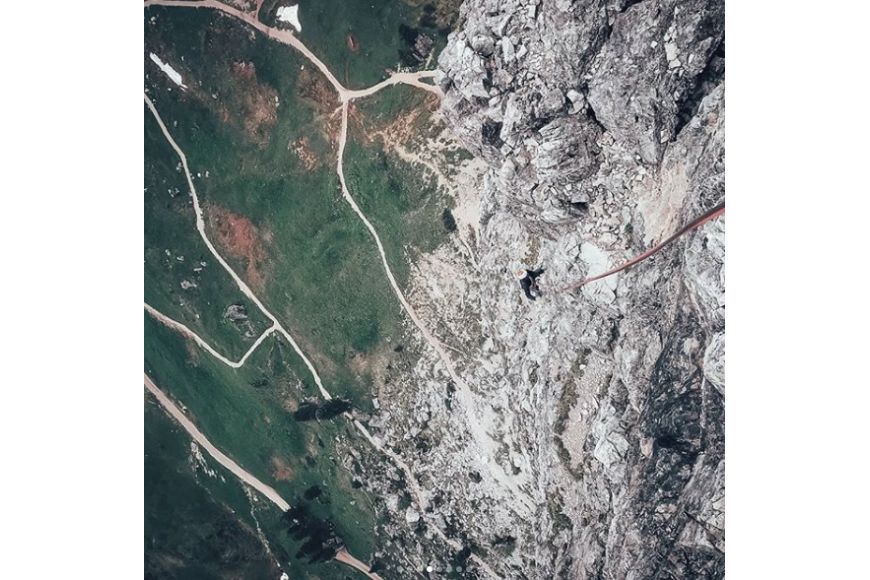
Alpinstore and Ortovox show you the different types ofalpinism/climbing descents.
Abseiling descent
Step 1: Cowing
Before starting the abseiling descent, you must "cowl" at the relay point to self-insure. The "cow" is attached to thesafety ring of the harness with a lark's head knot.
Step 2 Pass the rope through the point
You have to pass the rope through the abseiling point.
If you are abseiling down two strands, you must connect them with a fist-knot.
Step 3: Secure the end of the rope and unwind it
Whether you're going down on one rope or two ropes, secure each end with a noose.
Then throw each strand of rope separately to prevent tangling.
Step 4: Tie a Prussik knot and hang in the harness.
Make a Prussik knot on the strand(s) of rope and attach this knot to the harness.
Step 5: Attaching the belay device
You have to pull on the rope to give some slack between the Prussik knot and the descent point.
In this way, the belay device (often a tube descender) can be attached to the rope without tension.
Step 6: Tensioning the rope
You have to pull on the rope so it can support your weight. The tension on the "cow" will disappear and you can "untie" yourself.
Step 7: Go down with your legs spread apart.
You have to come down with your legs apart, hip-width apart.
The person descending must always keep an eye on the end of the rope to make sure it is long enough to reach the next relay.
Both hands should be on the rope, below the belay device, with one hand lowering the Prussik knot.
Step 8: Release the rope
When you reach the lower abseiling point, you have to "cowl" and free the rope for your partner.
The windmill descent
Grinder with a tube descender :
The descender is attached, head up, to the abseiling point by 3 locking carabiners.
The rope on which the first person is going to descend must be attached to the abseiling point and must enter the descender from above.
Descending on foot
It is often the fastest but also the most tiring variant.
The descent on foot is done by more or less abandoned or uneven paths. It is therefore necessary to remain very vigilant and never stray from the path. These are generally indicated by cairns.



Leave a Reply
All fields are required